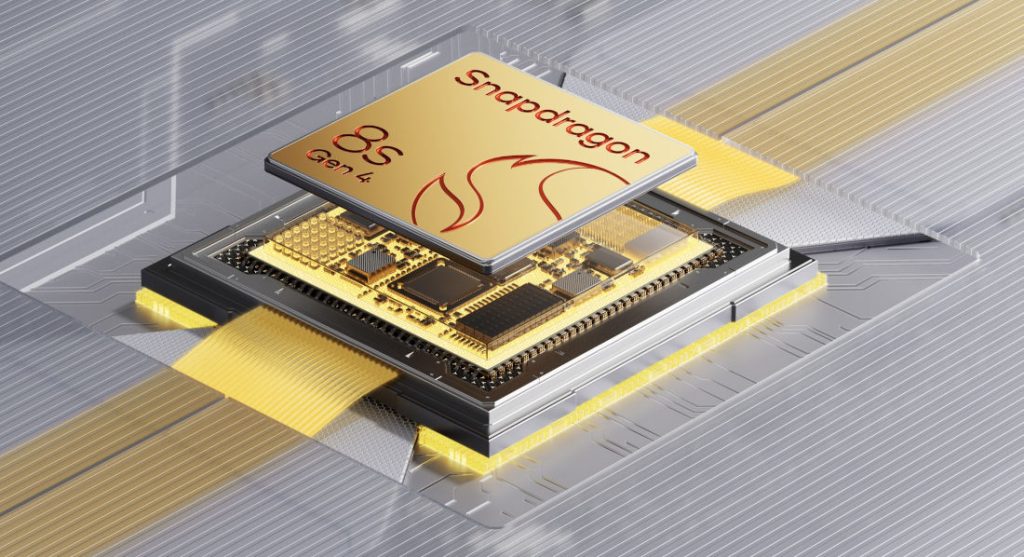
The perennial question in the smartphone market has been the point of diminishing returns for flagship system-on-chips (SoCs). Qualcomm’s latest offering, the Snapdragon 8s Gen 4, presents a compelling technical argument for a re-evaluation of the upper mid-range category. Its integration into the recently launched POCO F7 for the Indian market provides a practical case study for examining the chipset’s architecture, performance metrics, and the strategic implications for Original Equipment Manufacturers (OEMs). This analysis will dissect the technical composition of the Snapdragon 8s Gen 4, moving beyond marketing claims to evaluate its core components. We will investigate the tangible performance uplifts, the rationale behind OEM adoption, and a critical, yet often overlooked, factor: the chipset’s role in enabling extended software support, a significant value proposition in the Android ecosystem. By examining its implementation in the POCO F7, we can objectively assess its position in the market.
Inside the Snapdragon 8s Gen 4

The Snapdragon 8s Gen 4 (model SM8735) is a deliberate and strategic tiering of Qualcomm’s 8-series portfolio. Fabricated on TSMC’s 4nm process node, it inherits key architectural elements from its flagship counterparts while making calculated trade-offs to hit a specific performance-to-cost ratio.
CPU Architecture and Performance: The SoC employs a Kryo CPU cluster in a 1+3+2+2 configuration, a departure from the 1+4+3 structure of its predecessor, the 8s Gen 3. It comprises a single high-performance Arm Cortex-X4 core at up to 3.2 GHz, three Cortex-A720 performance cores at 3.0 GHz, two Cortex-A720 cores at 2.8 GHz, and two more Cortex-A720 cores at 2.0 GHz. This configuration results in a reported 31% increase in CPU performance over the Snapdragon 8s Gen 3, offering substantial computational headroom for demanding applications.
Adreno 825 GPU: A Sliced Architecture Approach: A significant architectural update lies in the Adreno 825 GPU. This is the first time Qualcomm has brought its new sliced GPU architecture, previously exclusive to the flagship Snapdragon 8 Elite’s Adreno 830, to a non-elite tier. While the Adreno 830 utilizes three GPU slices, the Adreno 825 is configured with two. This design choice is pivotal, allowing for a 49% improvement in graphics performance compared to the previous generation. Critically, it enables hardware-accelerated ray tracing with global illumination, a feature that brings a new level of lighting and shadow realism to mobile gaming, previously unattainable in this price segment.
AI and ISP Enhancements: The onboard Hexagon NPU (Neural Processing Unit) has received a 44% performance boost, facilitating more complex and faster on-device AI workloads. This underpins features like real-time semantic segmentation in the Cognitive ISP (Image Signal Processor), which can now recognize and optimize over 250 objects in real-time. For the end-user, this translates to more sophisticated computational photography and genuinely useful on-device generative AI features without constant cloud dependency.
The Software Longevity Factor: A Chipset-Enabled Policy
A crucial, and technically significant, development is the role of the chipset in enabling longer device lifecycles. Qualcomm has engineered its newer Snapdragon platforms, including the 8s Gen 4, to support extended software updates. This foundational support from the silicon vendor is what empowers OEMs like POCO to offer more robust and long-term update policies.
For the POCO F7, this translates directly into a commitment of four generations of Android OS upgrades and six years of security patches. This is a paradigm shift for a mid-range device. From a technical standpoint, this means the chipset’s board support package (BSP) and drivers are maintained by Qualcomm for a longer period, significantly reducing the engineering overhead for POCO to develop, test, and deploy new Android versions and security updates. This fundamentally increases the long-term value and security posture of the device, making it a more viable investment for consumers.

The POCO F7 Case Study
The selection of the Snapdragon 8s Gen 4 for the POCO F7 is a calculated engineering and product strategy. For POCO, a brand built on a performance-for-price ethos, the 8s Gen 4 provides a direct pathway to delivering near-flagship performance metrics without incurring the full cost of the top-tier Snapdragon 8 Elite SoC.
The chipset’s capabilities directly enable key features of the POCO F7. The Adreno 825 GPU’s power is essential for driving the device’s 6.83-inch 1.5K AMOLED display at a 120Hz refresh rate, especially in graphically intensive scenarios. Furthermore, the chipset’s improved power efficiency (a claimed 39% reduction in consumption over its predecessor) is a critical component in maximizing the endurance of the Indian variant’s substantial 7,550mAh battery. The decision to pair this SoC with UFS 4.1 storage and LPDDR5X RAM ensures that data throughput does not become a bottleneck, allowing the full potential of the CPU and GPU to be realized.
The Bigger Picture

The Snapdragon 8s Gen 4 is not merely an incremental update. It represents a strategic fragmentation of the premium tier, creating a new “upper mid-range” category with a compelling technical foundation. Its architecture, particularly the adoption of a sliced Adreno 800-series GPU, delivers a quantifiable leap in graphics performance that blurs the lines between mid-range and flagship gaming experiences.
The implementation in the POCO F7 demonstrates the tangible results of this strategy. However, the most significant long-term impact may be the chipset’s role in standardizing extended software support. By providing the underlying framework for policies like POCO’s 4+6 year commitment, the Snapdragon 8s Gen 4 is helping to address a critical pain point in the Android ecosystem. It sets a new standard for what consumers can look forward to in a device that doesn’t carry a premium flagship price.
